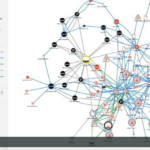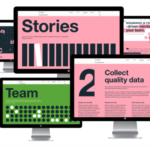
LIZ ROGERS
IBM Security
[s2If is_user_logged_in()]DOWNLOAD PDF
[/s2If]
[s2If current_user_can(access_s2member_level1)]
[/s2If]
This case study examines how one Artificial Intelligence (AI) security software team made the decision to abandon a core feature of the product – an interactive Knowledge Graph visualization deemed by prospective buyers as “cool,” “impressive,” and “complex” – in favor of one that its users – security analysts – found easier to use and interpret. Guided by the results of ethnographic and user research, the QRadar Advisor with Watson team created a new knowledge graph (KG) visualization more aligned with how security analysts actually investigate potential security threats than evocative of AI and “the way that the internet works.” This new feature will be released in Q1 2020 by IBM and has been adopted as a component in IBM’s open-source design system. In addition, it is currently being reviewed by IBM as a patent application submission. The commitment of IBM and the team to...



